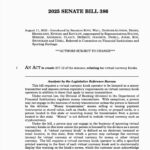Solana Improvement Proposal by Jump Crypto’s Firedancer Team Seeks to Remove Block Compute Unit Limit
Background on the Solana Improvement Proposal
Jump Crypto’s Firedancer client team has introduced a new Solana Improvement Proposal, designated as SIMD-0370, targeting the Solana (SOL) blockchain. The proposal, submitted in June 2024, aims to eliminate the fixed block compute unit (CU) limit following the activation of the Alpenglow network update. Currently, Solana restricts blocks to 60 million compute units (CUs) per block, a value that is slated for an imminent increase to 100 million CUs under the prior proposal SIMD-0286. Reporting via CryptoNews.
The core rationale for this new improvement proposal is rooted in recent architectural enhancements provided by the Alpenglow update. The Firedancer team maintains that a static compute unit limit has become redundant, as the Alpenglow upgrade allows blocks which exceed network processing capacity to be automatically skipped rather than slowing down the entire chain.
This proposed adjustment is considered significant for the future scalability of Solana, a leading blockchain known for its high throughput and low transaction costs.
Market Reaction and Technical Implications
With SIMD-0370, the Solana blockchain could adopt a mechanism where block producers are permitted to add as many transactions as their hardware and software can handle to each block, untethered by a predetermined CU ceiling. If a validator’s system is unable to process a large block in the allotted time, it will skip that block and lose corresponding rewards.
This approach intends to spur competition among validators, encouraging them to upgrade both software and hardware to retain their earning potential. The Firedancer team describes this self-reinforcing mechanism as creating a “flywheel effect,” where:
1. Block producers strive to maximize transactions for increased rewards.
2. Validators are incentivized to enhance their system performance to avoid skipped blocks.
3. The network’s overall transaction capacity expands directly with the available computational power.
The Firedancer team asserts that this method facilitates organic network scaling as “Solana’s transaction capacity will scale with its hardware power,” according to the CryptoNews report.
Potential Benefits and Considerations for Solana Network
Should SIMD-0370 be ratified and implemented, it could result in increased block sizes over time, providing more capacity and potentially reducing congestion for Solana users and developers. This represents a shift towards adapting blockchain throughput dynamically in response to ongoing market and technology trends, instead of pre-set platform limits.
However, some experts urge caution. Industry analysts advise that Solana’s network maintainers should carefully monitor the consequences of ever-larger blocks on distribution times and ensure the integrity of concurrent block production designs. Issues such as increased demands on validator infrastructure and possible propagation delays remain important concerns as the proposal moves through the review phase.
SIMD-0370 is currently under active evaluation within the Solana community, and no timeline for a final decision has been announced.
What’s Next for Solana’s Improvement Proposal
Feedback on SIMD-0370 will be collected and considered before any final acceptance or implementation plan is developed. The review and discussion process is a standard step in Solana’s governance system for major protocol changes. Observers and stakeholders are watching closely to see if this proposal will lead to higher efficiency and throughput for the Solana network, keeping it competitive in the evolving cryptocurrency technology landscape.


















